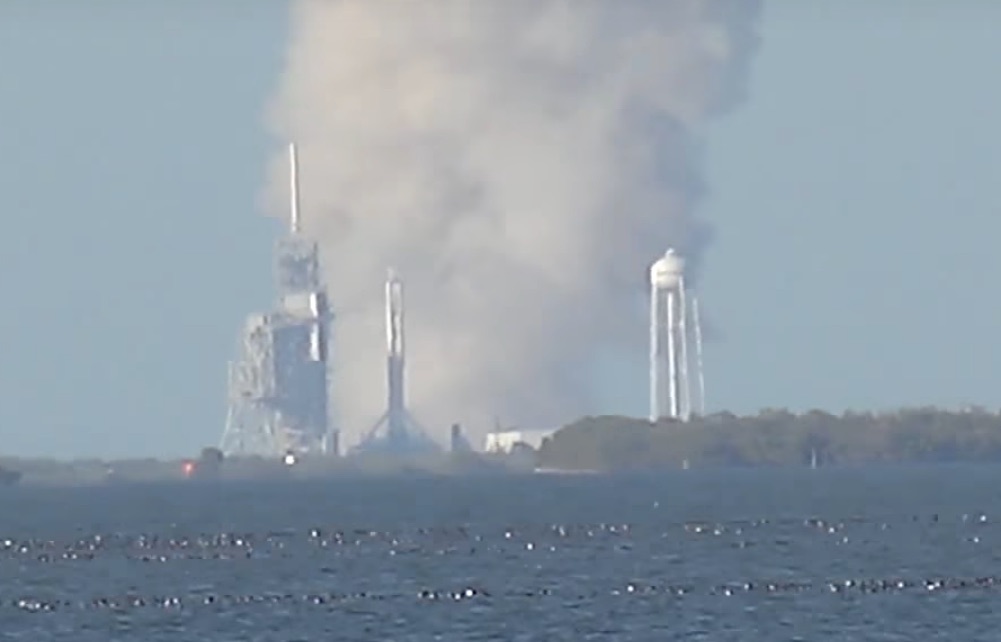SpaceX successfully completed a pre-launch static fire test yesterday of its Falcon 9 rocket ahead of this week’s resupply mission to the International Space Station. With the rocket clamped in place, all 9 of the Merlin-1D engines fired off for 3.5 seconds, sending a plume of smoke up into the sky.
First static fire test of Falcon 9 at historic launch complex 39A completed in advance of Dragon's upcoming mission to the @Space_Station.
— SpaceX (@SpaceX) February 12, 2017
The Saturday morning launch will be the 12th Dragon mission and the 10th cargo delivery to the ISS for SpaceX. The launch will carry almost 2 tons of pressurized cargo and one ton of unpressurized cargo up to the ISS.
Saturday’s Dragon launch would be the first SpaceX flight to make use of the historic Kennedy Space Center Launch Complex-39A which was built specifically for the Apollo program. All of the manned Apollo missions with the exception of Apollo 10 utilized LC-39A as did the first 24 space shuttle missions.
SpaceX signed a 20 year lease with NASA for Launch Complex-39A in 2014 and proceeded to modify the pad to support planned launches of Falcon 9 and Falcon Heavy.
It was a static fire test accident at the nearby Launch Complex-40 on September 1, 2016 that forced SpaceX to accelerate refurbishment plans of Launch Complex-39A to maintain East Coast launch capabilities. In the meantime, SpaceX utilized Space Launch Complex 4E at Vandenberg Air Force Base in Central California for the January Falcon 9 launch.











